Site d’Haegasa (parc Surobuin) (해가사의 터)
2.8 Km 5338 2019-06-13
30-23, Jeungsan-dong, Samcheok-si, Gangwon-do
+82-33-570-3721
Bien que le lieu original du site d’Haegasa, Imhaejeong, est inconnu, on suppose qu’il a dû être situé sur le mont Wausan, à l’extrémité nord de la plage de Samcheok et actuellement, le site est une zone d’équipement militaire. Ainsi, le site d’Haegasa, Imhaejeong a été réinstallé sur la plage de Jeusandong sur un magnifique paysage de fond, sur la base d’un conte du nom de « Haega » dans « Samgukyusa, la vie de Suro Buin (Madame Suro) ».
A proximité il y a le parc Suro Buin où les visiteurs peuvent trouver des structures de Dragon Ball qui réalisent leurs rêves. La structure de Dragon Ball installée en avril 2006 attire particulièrement les jeunes couples qui souhaitent que leur amour soit éternel.
Le site est célèbre pour son point photo puisque c’est là que vous pourrez prendre une des plus belles photos de la plage de Chuam, un site populaire pour profiter du lever du soleil. La scène époustouflante créée par les belles lignes côtières, la mer et les mouettes, captive les voyageurs.
Daebatgol (대밭골가든)
2.9 Km 186 2016-09-05
96-30, Sutgol-gil, Donghae-si, Gangwon-do
Daebatgol is a special eel restaurant having a fishing place in front of it. Its recommended dish, Minmul-Jangeo (freshwater eel) contains 200 times the amount of vitamin A as beef. Even though it is a high-protein food, it has never been known to induce geriatric diseases. All employees wearing a uniform neatly welcome customers with a smile and give great service. From making you feel welcome to preparation of dishes, all employees do their best to give customers satisfaction.
Tteurae Honghapbap (뜰애홍합밥)
3.3 Km 48 2021-03-30
615, Saecheonnyeon-doro, Samcheok-si, Gangwon-do
+82-33-644-0652
It is a place that sells Korean dishes prepared with seasonal ingredients. The best menu at this restaurant is rice with mussels . This Korean dishes restaurant is located in Samcheok-si, Gangwon-do.
Midami (미다미)
3.4 Km 206 2016-09-05
994-16, Cheongok-dong, Donghae-si, Gangwon-do
The Japanese restaurant, Midami, serves real Japanese dishes prepared by a cook having twenty years’ experience. All raw fish are purchased early in the morning to serve fresh. One of the most popular dishes is Midami Jeongsik. (Japanese set menu). It serves raw fish dish and side dishes like fritters, broiled mushrooms and sushi. Inside is clean and managed better than other Japanese restaurants.
Plage de Samcheok (삼척해변)
3.5 Km 14516 2021-10-20
76, Thema town-gil, Samcheok-si, Gangwon-do
+82-33-570-4401
Située à 1,4 kilomètres du centre-ville, la plage Samcheok est facilement accessible et dispose d'une immense étendue de sable blanc sur 1,2 kilomètres de long et 100 mètres de large. L’eau est peu profonde et beaucoup de vacanciers aiment s’y rendre chaque année (environ 500 000 par an).
Cette plage est tout particulièrement magnifique et elle a souvent été le décor de tournages de plusieurs films et drames coréens tels que « April snow », « One fine spring day » et « South of the sun ». Les forêts de pins qui l’entourent contribuent à créer une ambiance unique à toute saison.
Picasso Hotel [Korea Quality] / 피카소호텔[한국관광 품질인증]
4.0 Km 7666 2023-04-13
123-6, Donggul-ro, Donghae-si, Gangwon-do
+82-10-9249-8060
Hotel Picasso is a dark modern building with more than 50 rooms and a parking lot on the ground floor. There are traditional Korean rooms, rooms with a bed, and vacation home-type rooms. The Garden VIP Suite Room can accommodate up to five people, and it comes with an outdoor kitchen and barbecue facility for guests to cook. There is a desktop computer in some of the rooms, so those who need one can ask for a room with a computer when making a reservation. Nearby tourist attractions include the Cheongok Cave, a limestone cave with a total depth of 1,400 meters, located in the downtown area, and Chuam Beach, which is a popular destination among families during the summer. There is also Mureung Valley in between Dutasan Mountain and Cheongoksan Mountain for those looking for a quiet place to relax during the hot summer days.
La Grotte Cheongok (천곡천연동굴)
4.1 Km 26422 2021-03-26
50, Donggul-ro, Donghae-si, Gangwon-do
+82-33-539-3630
Cheongok est une grotte de calcaire qui s'étend sur 1400 mètres. Elle est estimée avoir été créée entre 400 et 500 millions d'années auparavant. Ce qui fait sa grande caractéristique, c’est son cratère situé au plafond est qui est le plus long de Corée. On y trouve aussi des rideaux de stalactites, des terrasses, des cascades de stalactites et de nombreuses autres formations rocheuses impressionnantes. Cheongok offre un merveilleux spectacle pour les touristes et les passionnés de spéléologie.
Buil Makguksu (부일막국수)
4.9 Km 474 2016-09-05
7, Pyeongdeung-gil, Samcheok-si, Gangwon-do
Thanks to a grand view and a peaceful atmosphere, dinners can fully enjoy their dishes in Buil Makguksu. This restaurant’s pride and joy, hypocaust room (a room heated by hot air under the floor and in the walls), is large enough to accommodate group customers. Pictures hanging on the wall and fixtures enhance its peaceful atmosphere. All employees wear a green apron and look so neat as they welcome customers with a smile
Donganjae [Korea Quality] / 동해한옥 동안재(동안재) [한국관광 품질인증]
5.2 Km 774 2020-09-08
74-2, Cheongok 1-gil, Donghae-si, Gangwon-do
+82-10-2974-3007
Donganjae, a traditional Korean style house located near the beach in Donghae City of Gangwon-do, was opened in June 2018. The traditional Korean style house is equipped with modern facilities for convenience while still maintaining the elegant mood of a traditional house. The rooms are located in 5 traditional buildings. The foot bath in the garden gives the feel of a pool villa. Each of the 5 independent buildings (named Mureung, Duta, Chooam, Mukho, and Mangsang to accommodate 3-4 guests in each building) has an upper floor of which the three sides can be opened to command an unobstructed view. The outdoor foot bath in the center of the garden with pine trees relieves fatigue, and the soothing scent of pine trees completes the ambiance. It is possible to cook food in the room. Each room also has a bathroom equipped with bidet and a shower booth.
The recently constructed buildings are also handicapped-friendly. There is a parking space exclusive for these guests. There is also no raised spot at the gate and the threshold is made very low for easy entrance and exit. Various tools such as Tuho, Yut, Jegi, and top are ready for playing traditional games. You can likewise try wearing hanbok, Korean traditional clothes. The nearby tourist attractions include Cheongok Natural Cave, Chooam Chotdaebawi Rock, Mangsang Beach, Mukho Por,t and Mukho Lighthouse. There is a walking path behind the pension in the pine forest.
Pavillon de Jukseoru à Samcheok (삼척 죽서루)
5.6 Km 8619 2020-05-20
37, Jukseoru-gil, Samcheok-si, Gangwon-do
+82-33-570-3670
Le pavillon de Jukseoru, qui aurait été bâti aux environs de 1266, est l’une des huit principales destinations du district de Gwandong au centre-est de la Corée, connues ensemble sous le nom de Gwandong Palgyeong (les huit endroits célèbres). Juché à l’extrêmité d’une falaise surplombant la rivière Oshipcheon, le pavillon utilise les rochers de la falaise comme pierres angulaires, et possède un paljak (toit ancien) à cinq poutres.
On aperçoit ensuite les 26 panneaux accrochés aux chevrons du pavillon. Ces panneaux arborent des inscriptions de célèbres lettrés d’autrefois, parmi lesquels « Jeilgyeongjeong » (« Le meilleur pavillon au bord de la rivière », 1662) par Heo Mok, « Jukseoru » et « Gwandong Jeilru » (« Le meilleur pavillon du Gwandong », 1711) par Yi Seong-jo, ainsi que « Haeseon Yuheui Jiso » (« L’endroit aimé par les dieux de la mer », 1837) par Yi Gyu-heon. Parmi les autres personnalités ayant laissé leur trace, on peut citer le roi Sukjong (1674-1720), le roi Jeongjo (1776-1800) et Yulgok YiYi (1536-1584). De toute évidence, le pavillon de Jukseoru a été une source d’inspiration depuis sa construction, et continue encore maintenant à inspirer les visiteurs grâce à la vue magnifique de la nature environnante.
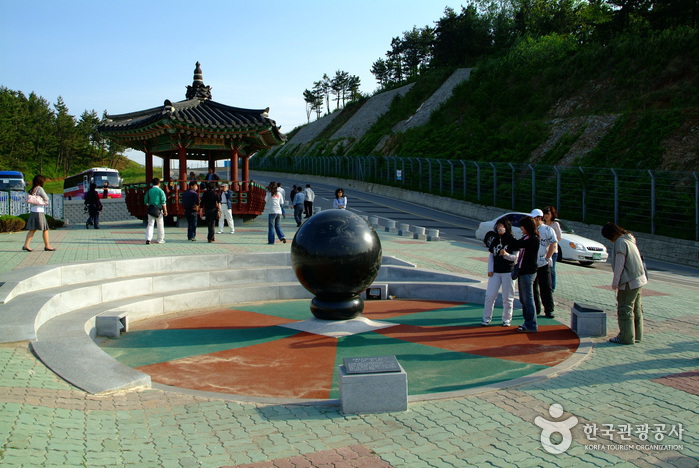

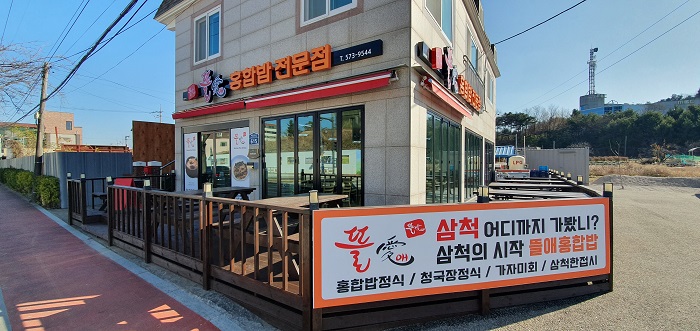
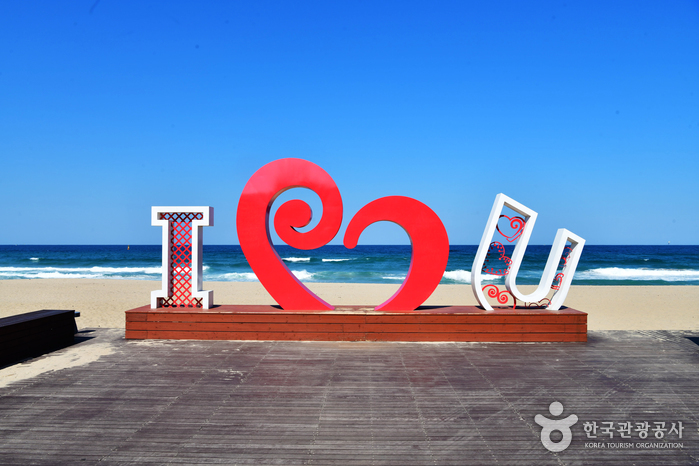
![Picasso Hotel [Korea Quality] / 피카소호텔[한국관광 품질인증]](http://tong.visitkorea.or.kr/cms/resource/80/824980_image2_1.jpg)
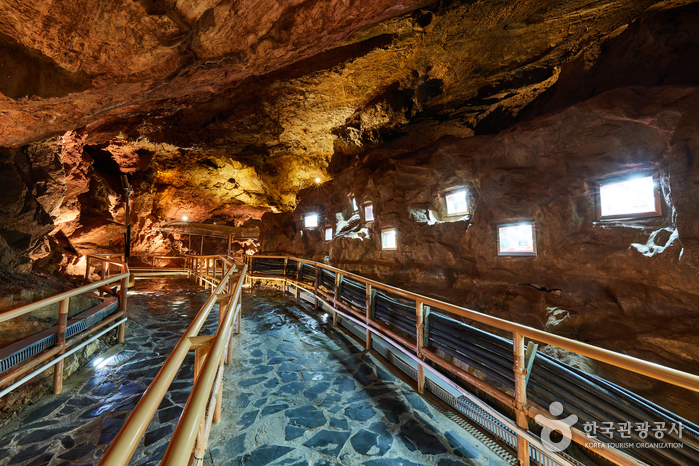
![Donganjae [Korea Quality] / 동해한옥 동안재(동안재) [한국관광 품질인증]](http://tong.visitkorea.or.kr/cms/resource/82/2633982_image2_1.jpg)
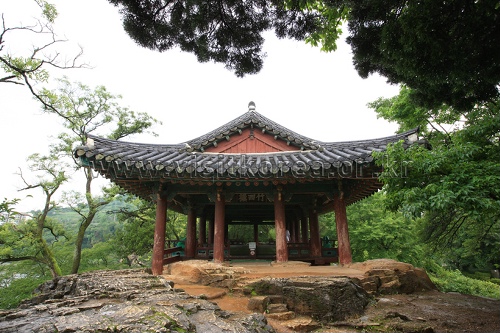
 Français
Français
 한국어
한국어 English
English 日本語
日本語 中文(简体)
中文(简体) Deutsch
Deutsch Español
Español Русский
Русский